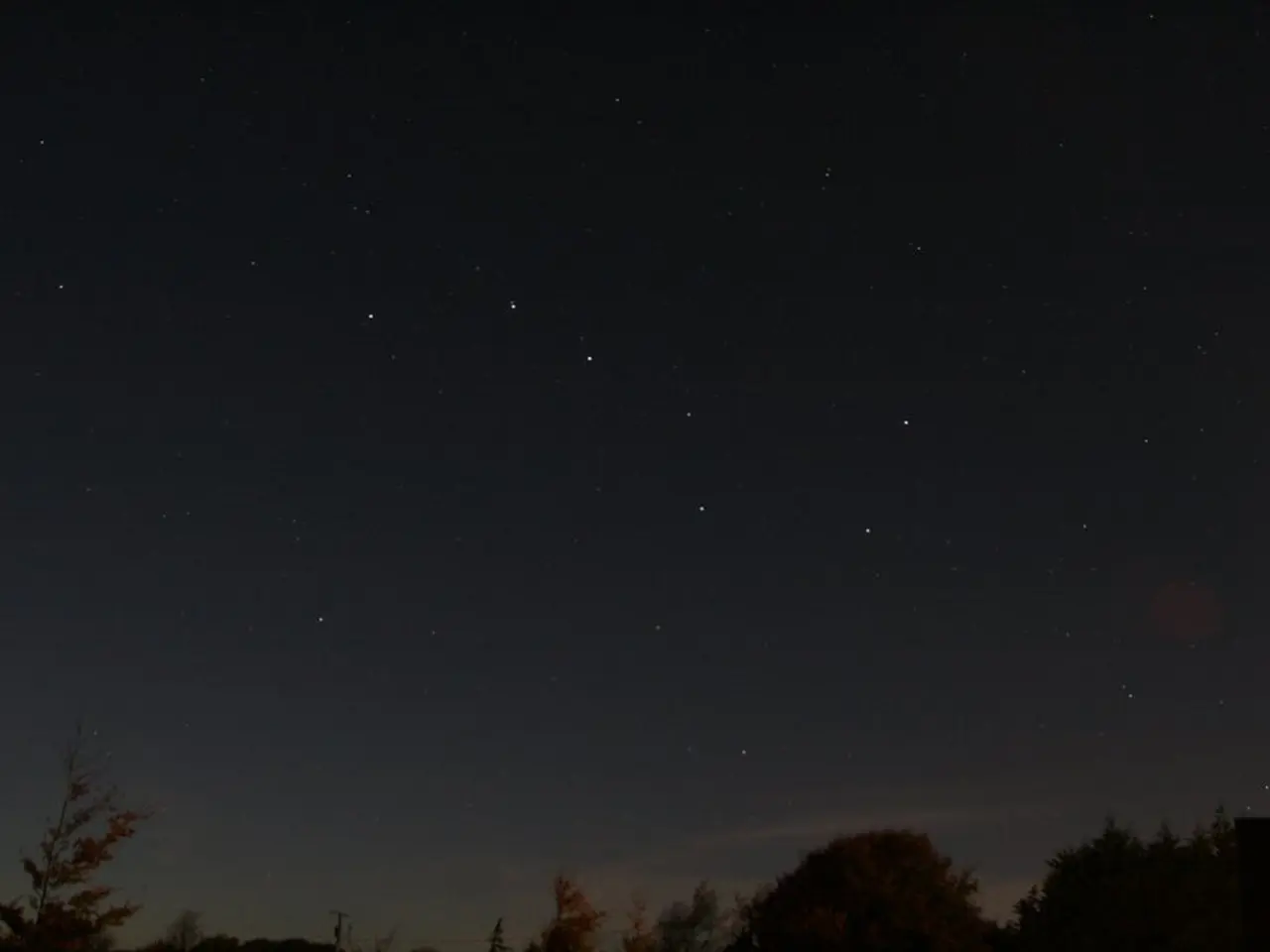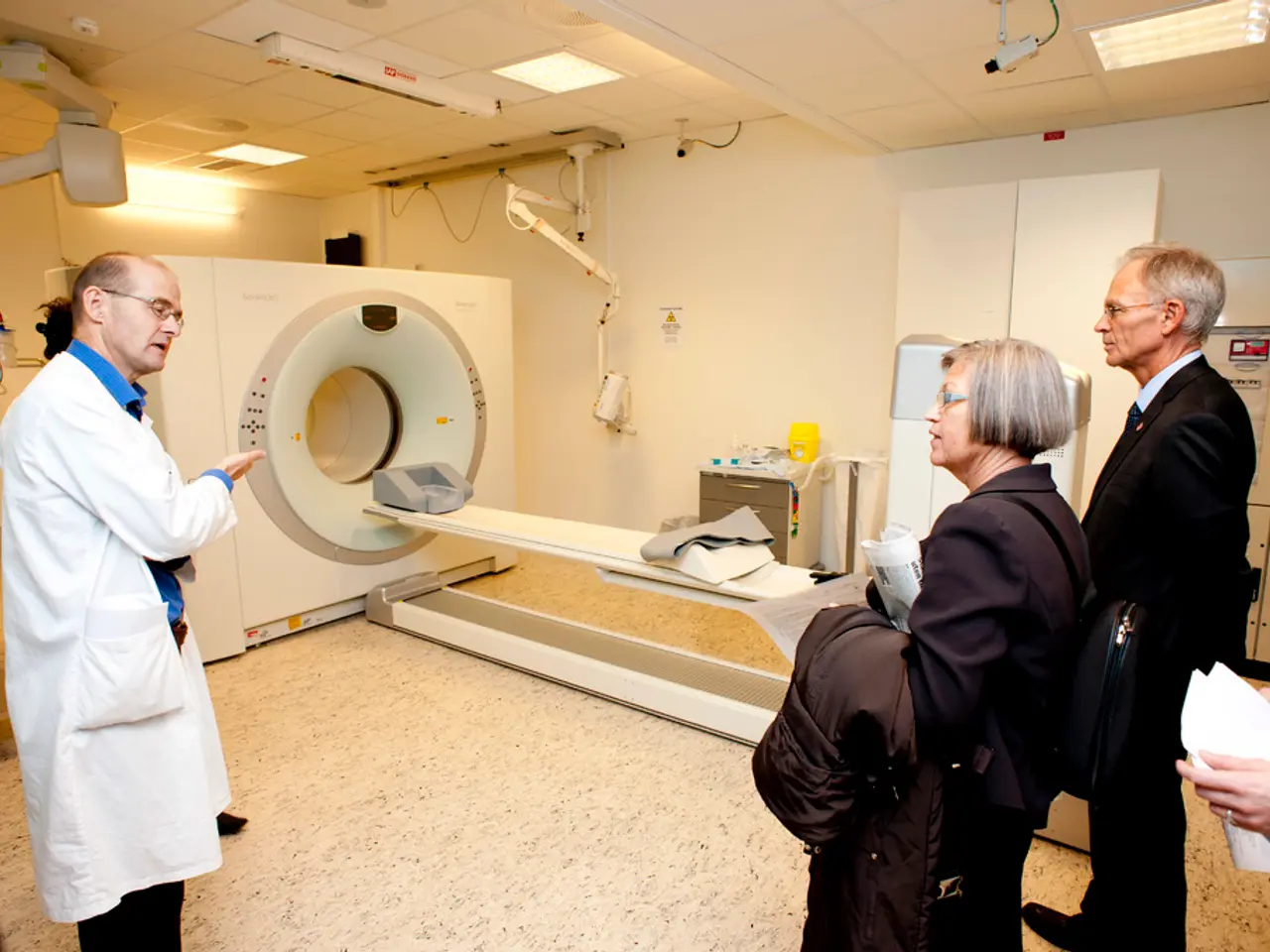Unexpected anomalies discovered in the heart of the Milky Way by scientists
In the heart of our galaxy, a discovery has been made that sheds new light on the complex process of star formation. A team of scientists, led by Kai Yang from Shanghai Jiao Tong University, has uncovered unique filamentary structures in the Central Molecular Zone (CMZ), a region known for its extreme conditions and vigorous star formation activity.
These filaments, unlike any seen before, do not arise from dust. Instead, they are believed to be evidence of a special type, driven by a proposed process involving shocks that transform solid molecules into gases, allowing for measurement. One such molecule of interest in these observations is silicon monoxide (SiO), which results from shock phenomena.
The study, published in a recent issue, focuses on one molecular signature from SiO, and further ALMA measurements could provide more information about the filaments and the proposed material cycle. The data for this discovery was gathered from observations made by the Atacama Large-Millimeter Array (ALMA) by scientists at Shanghai Astronomical Observatory and their international colleagues.
The CMZ, containing dense molecular gas and dust in large concentrations, presents a valuable laboratory to understand star formation under extreme conditions. The region exhibits harsh environments due to higher radiation fields, shocks, and turbulence. Investigations of this zone help reveal how dust grains survive, grow, and contribute to star formation amid such extremes, shedding light on processes that might differ from quieter regions like the Galactic disk where the Sun formed.
The formation of main-sequence stars like the Sun begins with the collapse of cold gas and dust grains within molecular clouds. Dust grains, although only about 1% of the interstellar medium (ISM) mass, critically influence star formation by cooling the gas, affecting its chemistry, and absorbing and re-emitting radiation, which regulates the physical conditions of star-forming regions.
As these dust grains and gas clump together under gravity in dense molecular clouds, they begin to form protostars. Surrounding dust plays a key role by facilitating the cooling needed for the cloud's further collapse. During this protostellar phase, dust grains can grow, sticking together with the help of mechanisms studied by astronomers using observatories like ALMA.
The protostar continues accumulating mass until nuclear fusion ignites in its core, converting hydrogen into helium, marking its entry onto the main sequence, where it spends most of its lifetime as a star like the Sun. The Sun, a G2-type main-sequence star, formed about 4.6 billion years ago through such a process of accretion and fusion initiation. Its formation was helped by its higher metallicity compared to older stars—a factor important for planetary formation, since heavier elements are essential for building rocky bodies.
This discovery in the CMZ indicates a material life cycle in the region, with the filaments potentially dissipating or disappearing, leaving molecules spread widely across the central molecular zone before cooling back into dust. Understanding the ISM cycle of dust formation, growth, and destruction in the CMZ context informs models on how interstellar dust enables and regulates cooling and chemistry essential for star birth across varied galactic environments.
- The unique filamentary structures discovered in the Central Molecular Zone (CMZ) of the galaxy are believed to be evidence of a special type driven by space science, specifically, a proposed process involving shocks that transform solid molecules into gases.
- Astrophotography and image processing have been critical in observing these filaments, with data collected from the Atacama Large-Millimeter Array (ALMA) showing promising results.
- Unlike other regions like the Galactic disk where the Sun formed, the CMZ presents harsh environmental conditions, which makes it a valuable laboratory for studying health-and-wellness aspects of dust grains, such as how they survive, grow, and contribute to star formation in extreme conditions.
- The environmental-science study focuses on one molecular signature from silicon monoxide (SiO), a molecule of interest in these observations due to its formation from shock phenomena, providing valuable insights into supernovae and the universe's dynamics.
- This research on the CMZ could lead to a better understanding of the science behind the interstellar medium (ISM) cycle of dust formation, growth, and destruction, informing models on how interstellar dust enables and regulates cooling and chemistry essential for star birth across various galactic environments.




